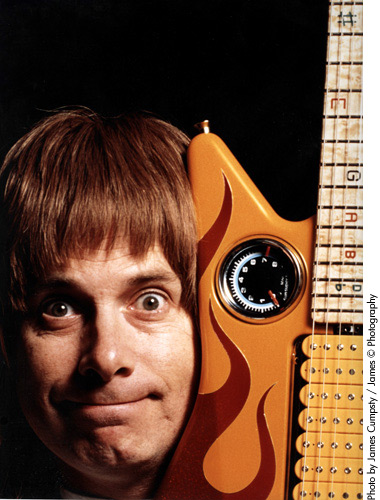In this post we’ll look at how to increase speed on the guitar. Developing speed on the guitar will not happen overnight, and like any skill, with practice and persistence you will start to see improvement. Of course, guitar lessons from a qualified instructor will always accelerate your development. If you are in the Orange County CA area, Hamrock Music is a great place for top quality private guitar lessons from a professional guitar teacher. Skype lessons are also available.

Here are some guidelines to follow when working on increasing speed:
Use Alternate Picking
You MUST get comfortable using alternate picking if you are not already. Alternate picking is the constant use of down stroke – up stroke – down stroke – up stroke – etc. Make sure you are holding the pick correctly (hold with only the thumb and index finger with the point of the pick directed into the strings. “Choke up” or hold closer to the point so you are not exposing a lot of the pick). There are other picking techniques (economy picking, sweep picking) but master alternate picking first before moving on to those.

Holding the Pick
Use Proper Hand Position and Technique
Make sure your fretting hand wrist is straight and rotate your wrist outwards, keeping your palm parallel and flat to the guitar neck. Rotating the wrist outwards may seem awkward at first but eventually it will become more natural. Bend the finger joints (not the wrist) to play more on the tips of the fingers.

Correct fretting hand position

Don’t do this!
Relax
I cannot stress this enough! Whether you are playing sports or a musical instrument, tension is your enemy. The reason it looks so easy when Yngwie Malmsteen or Jeff Loomis shreds blazing fiery fast solos is because IT IS… for them. They would not be able to play with such agility if they had tension in their hands or arms. The first step is realizing that you are playing with tension and identifying where exactly the tension is. You will consciously have to remind yourself to relax until it becomes a natural state.
Practice Tremolo Picking
Tremolo picking is very fast, smooth, and consistent alternate picking without regard to rhythm. It was originally meant to mimic a sustained string sound, such as a bowed violin. A classic example of a guitar player known for tremolo picking is Dick Dale, check out Misirlou. Tremolo picking and fast alternate picking are really the same picking hand technique, the only difference is you are synchronizing each stroke with an individual note in fast alternate picking.
Start Slow and Play Precisely
Everyone wants to take off out of the gate like a race horse but what you need to realize is that you will actually progress faster by starting slowly and playing the phrase CORRECTLY. If you try to play too fast right off the bat you WILL make mistakes and if you practice anything with errors you are reinforcing those mistakes, only to have to unlearn them and relearn correctly. Only advance speed when you are able to maintain the current speed without blunders.
Start with Shorter Phrases and then Expand
This is a great technique I like to use with my students. If you have a 10 note phrase you are working on, start with the first three notes and repeat those, starting slow and speeding up gradually (without errors!). Then add a note and repeat… rinse and repeat, you get the idea! Do this until you have the whole phrase down.
Use a Metronome
Nobody likes using a metronome but there is no use in being able to play fast if you can’t play in time. A metronome is also a great gauge of your progress. If yesterday you were able to play a phrase consistently without mistakes at a top tempo of 115 and today you are able to hit 120, that’s progress!
In the next post, I will discuss some great exercises for developing speed. If you are looking for a great guitar teacher to help you hit mach 10 shred speed, check out Hamrock Music .
Click here for more information on guitar lessons with Mark Hamrock.
Check out Hamrock Music’s YouTube Channel for video lessons for learning guitar, bass guitar, music theory, songwriting, composing, and music production.

